-
Introduction
-
Skill shaper
-
Coding coach
-
Sexism slayer
-
Restaurant reformer
-
Dream driver
-
Startup sister
-
Wage gap warrior
-
Stigma stopper
-
Fashion futurists
-
Reading revolutionary

Helping other women soar
A former welfare mother supplies cars for women re-entering the workforce.
A public health worker yearns to stamp out the stigma of menstruation in the developing world.
A biotech engineer embarks on a mission to teach a generation of black girls computer coding.
They’re smart, motivated and community-minded. They teach, create and employ with an eye toward improving the lives of others.
They are visionary women.
This Women’s History Month, CNN set out to highlight the efforts of 10 women who are helping other women find success, self-esteem and sometimes a safe haven.
The women represent diverse fields: technology, fashion design, policy, activism, literature and skilled labor. What they have in common is a mission to empower their fellow woman.
We brainstormed and networked to find women who might not be household names but whose efforts will change what women can do, from the home to the C-suite.
They operate inside the United States and beyond its borders. Their ideas are in varying stages of development: Some are just taking flight, while others are supported by powerful backers. The tie that binds them is a clear vision for a better future.
May we present The CNN 10: Visionary Women.

Skill shaper
As a product design student at the College for Creative Studies in Detroit, Veronika Scott developed a heavy-duty, lightweight coat that turned into a sleeping bag, as part of a class project. It seemed like the perfect product to help homeless people, until a woman in a shelter shouted at Scott one day: “We don’t need coats; we need jobs.”
In January 2012, a month after graduation, Scott launched the Empowerment Plan, a nonprofit that employs homeless women and teaches them to sew by making the coat. With stable, paying jobs, they’re empowered to decide what kind of job they want next, “to decide what kind of person they want to become,” she said.
It wasn’t easy for Scott: She was an art student, not a businesswoman, and her family wanted her to find a more traditional job.
“I didn’t think I was the right person,” she said. “But I recognized at that moment that I was, because nobody else was going to do it.”
Skeptics said homeless women wouldn’t be solid employees. It wasn’t a problem, Scott says: She found many women hungry for good jobs. But they didn’t always understand that it was OK to fail, so long as they learned to fix their mistakes.
Few women she hires know how to sew, Scott says, but within a few months, they can create a coat in hours.
Since launching in a homeless shelter closet with just a few people, the Empowerment Plan now employs 20 people. Every month, they make 550 coats, which are distributed for free to homeless people in Detroit and through outreach programs across the country. Production is limited only by space, but that is set to change soon: The Empowerment Project is expanding beyond its 3,000 square feet inside Ponyride, a creative workspace in a Detroit warehouse.
This year, The Empowerment Plan expects to launch a “buy one, give one” program that will make it sustainable beyond the donations and sponsorships that keep it running now. Hunters and backpackers who’ve asked to buy the coat will be able to do so, and the Empowerment Plan will still create coats for homeless people who need them.
More important, Scott says, the Empowerment Plan will be hiring.
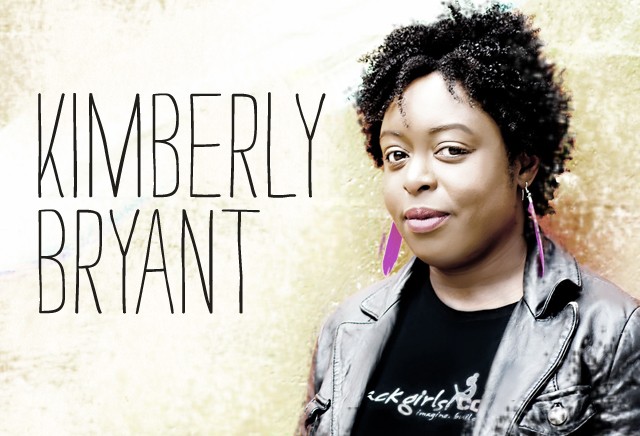
Coding coach
A few years ago, Kimberly Bryant, a San Francisco mom and biotech engineer, had a problem: She couldn’t find computer programming opportunities for her 12-year-old daughter, a heavy gamer.
Eventually, she found a weeklong summer camp at Stanford University, which her daughter loved. But when Bryant heard that her daughter was the only girl of color at camp, she felt like she was right back at Vanderbilt University, where she was the only African-American woman in her electrical engineering classes in the 1980s.
A light bulb went on.
“I really knew I had to do something to address the problem and create something, a program that would nurture girls like my daughter,” Bryant said.
Today, women of color make up 3% of the technology industry work force. Bryant herself has spent much of her career in biotech and engineering as the only African-American woman in the room.
So, with two decades of biotech and engineering experience behind her, she launched Black Girls Code in 2011. The organization teaches computer programming and entrepreneurial skills to girls of color, ages 7 to 17, hoping to train them to become tech leaders of the future.
“We don’t want to just teach the girls to code,” said Bryant, who now works full-time for the nonprofit. “We also want to teach them to create businesses and to become business owners and become like the next Mark Zuckerberg or the next Bill Gates.”
In just three years, the program has reached 2,500 girls through chapters in seven U.S. cities and in Johannesburg, South Africa. Eight additional chapters across the country are planned for 2014, with the goal of reaching 1 million girls by 2040.
“We like to say we hope to be like the Girl Scouts of technology, having many different chapters in many different states, as well as many different countries,” Bryant said.
Bryant says she never set out to be a change agent. She originally thought she might become a lawyer. But she’s motivated to make a better professional life for her daughter, and other girls of color.
“When I tell the story of Black Girls Code, I’m also telling the story of a mother,” Bryant said.
“I’m doing something to make the world a better place for her child.”

Sexism slayer
Twitter tells the story:
“I walked 50 m from school and already 3 groups of guys catcalled & stared at me. I'm not even 16. And in a school uniform.”
“Officially angry now. Since moving to Paris in September men have commented crudely on my body every day without fail.”
“My coworker was walking me to my car after my closing shift, I thanked him and he laughed & says he could rape me right now.”
Each day, women experience indignities and brush them aside as a part of everyday life.
To change what’s considered acceptable, Laura Bates launched Everyday Sexism, a social justice campaign that documents gender-based harassment worldwide.
What began in 2011 as a safe space for Bates and friends to share stories of unwanted catcalls and groping grew faster than Bates ever imagined.
Several experiences had moved her to action. As an aspiring actor, she saw casting calls for women who were "virginal vixens.” As a nanny, she noticed girls younger than 10 worrying about their weight.
"It contributed to my awareness of the difference in the ways men and women are treated by the media and how it impacts children," Bates said.
In less than three years, women and men have shared more than 50,000 stories through Everyday Sexism’s websites in 18 countries and on Twitter, making it a leading voice in the global fight against rape culture.
In 2013, Everyday Sexism helped wage a campaign that led Facebook to pull sexist ads. British transportation police used stories from Everyday Sexism to train officers in a long-term effort to reduce sexual assault on public transportation. The project has advised British politicians on gender diversity and sex education policies.
It’s just getting started. Everyday Sexism kicked off 2014 with a successful Twitter campaign to pull a plastic surgery app from the iTunes store and Google Play. Next up, it plans to start a campaign aimed at teens, the age group most likely to experience partner violence, and participate in an event at the United Nations Commission on the Status of Women. Websites are in the works for additional countries. A book set to publish in April will collect some entries Everyday Sexism has received.
The goal of Everyday Sexism is to reach “well-meaning men and women” who have the power to shift culture: bystanders on public transportation, teens who could tell their friends not to call girls “slag,” parents who unwittingly buy chemistry sets for sons and makeup for daughters.
"Right from the start, this has been about people standing together to defeat prejudice," Bates said. "It’s about collaboration. That has to be the path forward."
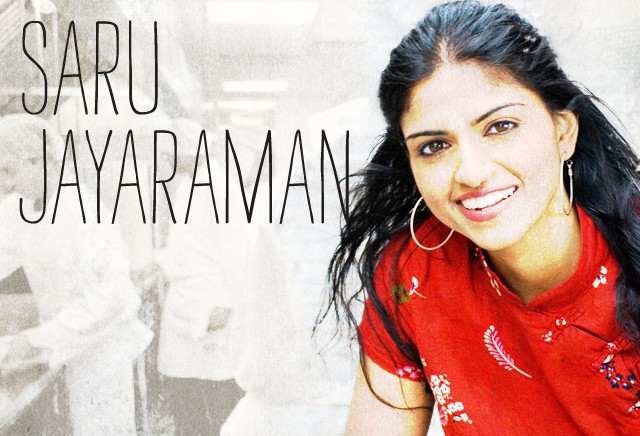
Restaurant reformer
Saru Jayaraman wants you to eat with your mind full. The 38-year-old co-founder and co-director of Restaurant Opportunities Centers United and author of “Behind the Kitchen Door” has spent her career fighting for service workers to get a fair wage in a respectful, safe environment. Most of those workers are women.
In an essay for Maria Shriver’s “The Shriver Report,” Jayaraman plainly laid out the facts: “Restaurant servers are three times as likely to live in poverty and use food stamps at double the rate of the rest of the U.S. work force. In a terrible irony, the women who put food on the tables of restaurant-goers everywhere are struggling to put it on their own.”
Through a new ROC United campaign, “Living Off Tips,” Jayaraman and her colleagues hope to put a face on this work force (70% of tipped workers are women who work at chain restaurants, according to a U.S. Census survey) by asking them to share their stories of what it truly means to depend on a federal minimum tipped wage of $2.13.
“Most young women start their career working in restaurants, and this is how they’re exposed to the world of work,” Jayaraman said. “They learn they can be paid nothing and touched and treated inappropriately. Because they’re living off tips, they are completely vulnerable to how their customers treat them.”
Jayaraman’s goal: shoring up the support it will take to persuade Congress to pass the Miller-Harkin Fair Minimum Wage Act, which would raise the federal minimum tipped wage for the first time since 1991.
If she and ROC United succeed, it won’t be the first time. The group was instrumental in the passage of a 2013 amendment to Washington’s Accrued Sick and Safe Leave Act, which assures that workers -- including tipped ones -- could start accruing sick leave after just one day on the job. ROC United’s Diners’ Guide to Ethical Eating empowers consumers to support restaurants that treat workers fairly, as well as encouraging those that don’t to step up their game.
And at the core of it all is a hunger for a brighter future for her daughters. Jayaraman said, “My two daughters will probably start out their work life at restaurants, which I’m proud of and fine with, but I don’t want them to ever think that it’s normal or acceptable to be paid, touched or treated in that way at any job, restaurant or otherwise. That’s what’s driving me.”
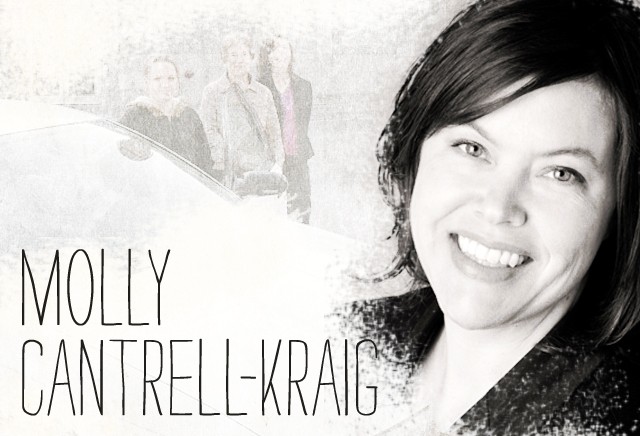
Dream driver
Imagine being a single mother on welfare in Iowa, trying to find a job and earn an associate’s degree -- and doing it without a car.
Molly Cantrell-Kraig was that woman 25 years ago. Two to four times a week, she caught a ride to school with a friend on his way to work, arriving two hours early for class.
"I know what it's like to have transportation being a chief barrier to independence," she said.
Still, she graduated within 18 months and found a job. She saved up to buy a car and a condo, where she raised three daughters in her hometown of Muscatine, Iowa. After they left for college, Cantrell-Kraig started the Women With Drive Foundation in 2011, a nonprofit that provides women with vehicles -- actual and figurative -- to change their lives.
In exchange, women must participate in programs to help them achieve self-sufficiency, such as GED classes, job training or financial literacy courses. Cantrell-Kraig works with social service agencies to identify women for whom access to transportation is a major impediment and helps caseworkers develop a two-year program with monthly progress checks.
"We don’t give out free cars," she said. “We ask for two years of your life.”
Mandy, one of the first participants, came to the Women With Drive Foundation after losing a portion of her food stamp benefits. Mandy was considering leaving school for a full-time job. Through her caseworker, the organization worked with Mandy’s college adviser to adjust her class schedule so she could get a part-time job, and it helped her find food security programs.
With a car and a plan, Mandy was able to juggle school and work, and she left an abusive relationship, Cantrell-Kraig says.
“We give them the phone numbers and tell them they’re accountable,” Cantrell-Kraig said. “Nobody can do it for you; you have to watch your own path.”
Women With Drive’s scope and impact has been deliberately small, but its ambitions are big, Cantrell-Kraig says. Through the program’s first few participants, she learned what works when choosing applicants and monitoring success.
She’s continuing to operate in Iowa, but in 2013, she moved the Women With Drive Foundation to Chicago, where she’s accessing a more robust network of social services, nonprofits -- and potential participants.
Talks are under way for more cars from an automaker and to include public transportation and car-sharing assistance.
“If I can make it work in a city of 3 million people, it’s easier to scale for other places,” she said.

Startup sister
Amid a sea of young students sporting identical uniforms and red leather backpacks, there was Ari Horie. She had a pink backpack, and it sparked a realization: Being different didn’t have to be a bad thing.
“At that point I was just 7 years old, so I felt very isolated. ... I wanted to belong,” Horie said.
She built up resilience during those years of standing out in her native Japan and experienced a new sense of belonging years later as an exchange student in the United States.
She thinks of those experiences now, after founding Women’s Startup Lab in 2013. It’s a technology industry accelerator designed to help female startup founders flourish in a field dominated by men.
At Women’s Startup Lab, they’re considering how women work differently, Horie says.
“Having more diversity and having a woman be part of it in a unique way actually creates an opportunity,” Horie said.
The magic ingredient is a collaborative process based on hito, the Japanese pictograph letter that means “human.” She says the character looks like a man and a woman, leaning on each other; If one falls, they both fall.
With more questions asked and more opinions offered, female entrepreneurs find more success, she says. The “hito rule” that Women’s Startup Lab swears by is based on collaboration: “Women tend to do really well in that environment,” Horie said. “Instead of saying ‘I know the answer,’ they say, ‘What do you think?’ ”
Women’s Startup Lab helps female tech company founders grow their companies, expand their technological goals and focus on the traits that will best serve them in business.
“Nobody really talks about it, but the amount of pressure and stress that founders are under, it’s enormous,” Horie said.
The 18 women who joined Horie’s accelerator program in 2013 weren’t fresh startup hopefuls but Silicon Valley serial entrepreneurs, she says -- not what Horie was expecting. “They say, ‘We want to connect and be able to talk about some of the challenges.’ ... That’s very different than the male serial entrepreneur.”
Horie’s goal for 2014 is to reach more female startup founders around the United States or internationally. Creating a hub for them will mean “women can have access to our connections and be able to succeed,” she said.
Horie doesn’t want women to feel limited by the culture they were born into or the place where they live, she says. She believes that their opportunities should be endless.
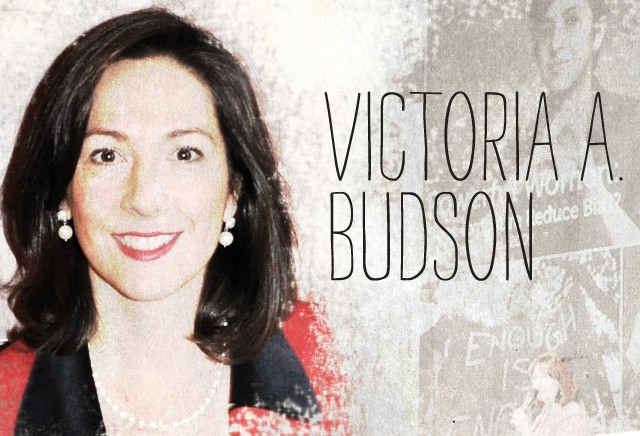
Wage gap warrior
Victoria Budson has dedicated more than 20 years of her career toward women’s equality.
But her 6-year-old daughter is a little less patient.
“Have you finished closing the wage gap?” her daughter regularly asks at the end of each day. “You need to finish that, Mom.”
Budson’s life’s work is gender equality. And like anyone tackling a big challenge, she has a clear vision, deep knowledge and an indefatigable spirit.
Her multipronged, data-driven approach to closing gender gaps presents a novel way to address societal inequity.
In April, she will travel to Paris to present the work of the Boston Women’s Workforce Council, a scalable public, private and academic partnership to close gender gaps, to the Organization for Economic Co-operation and Development.
In June, the Women and Public Policy Program will unveil a gender action portal where anyone can access their research for ideas and data. This fall, she’ll host a conference related to women’s lives in transition, expanding the conversation of women and work life balance to include all life and career transitions.
“If you have a whole world to change,” she said, “you’ve got to go with what works.”
It’s difficult to imagine that someone who feels compelled to stand up for so many once could barely stand up at all. When she was a 20-year-old junior at Haverford College and “just a regular college student, doing regular college things,” a crippling back injury pushed her back home to Massachusetts.
Largely confined to a bed for a summer, she had months and months to think about what she would do if her back healed. That’s when she had an epiphany. “It was about how to build a life with what you have instead of waiting for the life you wish you had,” she said.
After a spinal fusion and a year of recovery, she enrolled in Wellesley College and learned what it was like to be treated like a “first-class person.” At the women’s college, she was granted the opportunities and tools to become the leader she is now.
“Every woman’s life is valuable (and) precious,” Budson said. “And every woman deserves to have a more equal life.”
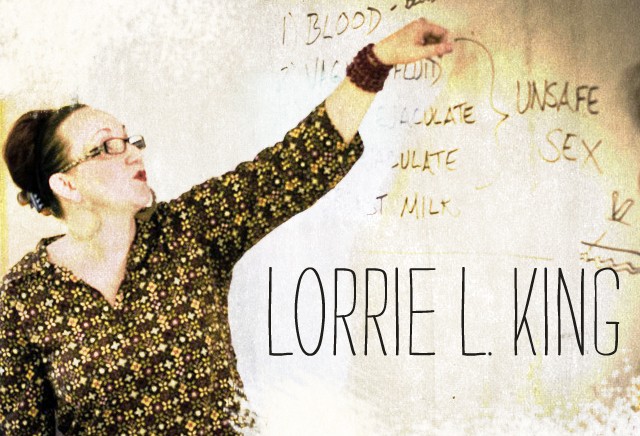
Stigma stopper
“Why does it hurt when I bleed?”
It’s the most common question Lorrie L. King hears from girls and women around the world, from Nepal to India, Nicaragua to Atlanta, in any community where stigma still exists around menstruation.
A common reason girls stop attending school in those communities is lack of access to basics when they start their periods: sanitary napkins, clean water, soap, toilets, a change of clothes or underwear.
King, a 20-year veteran of public health, was shocked to learn those facts during a 2010 visit to assess educational needs in India’s Andhra Pradesh state. A teacher told her that girls regularly miss school each month because their families can’t afford sanitary napkins. When King learned that a month’s supply of pads cost about 50 cents, she said a “white savior” mentality compelled her to buy as many as possible.
She quickly learned that you can’t just throw a bundle of money -- or sanitary napkins -- at the problem. It takes infrastructure and buy-in, mostly from men who lead communities.
“It’s like peeling back the layers of an onion,” she said. “Male buy-in is huge, paving the way for successful interventions in traditionally patriarchal communities.”
To tackle the problem, King formed the Atlanta-based nonprofit 50 Cents. Period. Though its focus is global, the organization also partners with immigration and refugee service providers in its hometown to deliver classes about menstruation hygiene, reproductive health and family planning.
Outside the United States, infrastructure development is often the foundation. In that first school in India, education was useless without a water system, so 50 Cents. Period. helped broker alliances to create one. King spends much of her time traveling the world, speaking to women and community leaders to get a sense of their needs and to develop culturally appropriate solutions.
She kicked off 2014 in Liberia, where she spoke with more than 700 girls and women and met with nurses, pastors and doctors to develop training.
A long civil war that ended in 2003 decimated Liberia’s medical infrastructure, making abortions one of the most common forms of birth control, King says. There, the most common question she heard is, “Will family planning affect my ability to get pregnant?”
It’s complicated and sad, King admits, but it starts with a conversation.
“There’s such a culture of silence around this issue,” she said. “Some of these women have been waiting months, even years, to ask these questions.”
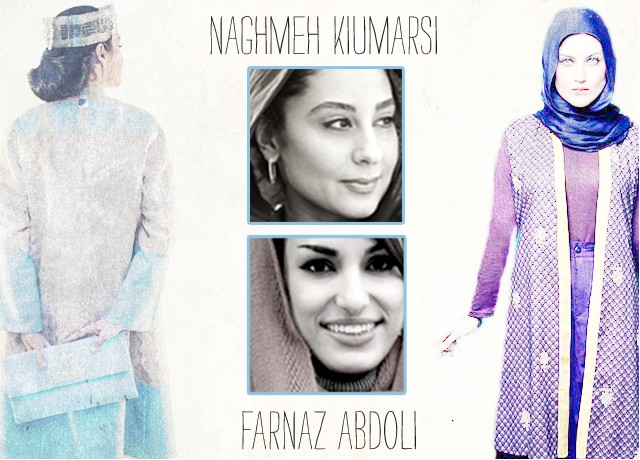
Fashion futurists
When Iranian President Hassan Rouhani took the oath of office in August, he sent a tailor-made message for an evolving nation: moderation.
During the era of Rouhani’s predecessor, Mahmoud Ahmadinejad, the Basij volunteer militia, the “morality police,” took to the streets to maintain a strict Islamic dress code that had been in place for women since 1979.
Women who weren’t wearing head-to-toe black chadors or drab-colored manteaus with a hijab would often be publicly reprimanded or even arrested.
Designers Naghmeh Kiumarsi and Farnaz Abdoli always sensed a brighter future for their Middle Eastern home. Both fashion designers have drawn international attention recently for collections that shake up old standards and show another side of Iranian women.
Abdoli, who grew up in Shiraz, credits her mother for her passion for fashion. Abdoli would design clothes for herself and her sister, and her mother would sew them.
“I always thought that I must wear something different, something with color,” she said. Eventually, she realized other women out there might want to weave tradition with statement pieces.
Kiumarsi experienced a similar epiphany. She grew up on the hemlines of a tailor, her grandmother, who would sew what Kiumarsi sketched, painted and designed. “I had a reputation of dressing differently and was used to getting many compliments for it,” she said.
Both designers’ collections are dominated by colorful prints, interpreted silhouettes and lightweight fabrics, a cognizant, forward-thinking aesthetic that suits the climate and state dress codes.
Kiumarsi says that when she started designing her own line nine years ago, her ideas weren’t always received well.
“As a designer, I am daring, and I encourage women to also be avant-garde in the way they dress,” she said.
Abdoli also had some adverse reactions but says the positives outnumbered the negatives.
“I would not be working in Iran if I had faced lots of problems,” she said. “We have many talented people in Iran, and the society needs us, not only the women but the men.”
Since 2013, Abdoli says, she has received more messages from Europeans, Americans, Canadians and others who now realize the images they associated with Iranian women are outdated or just wrong.
“They told me that they have changed their ideas after seeing my pictures and designs,” she said.
What’s next for them? More designs and a broader audience. Both say they hope upcoming exhibitions across Europe will attract a global following as passionate as the one in their home country.
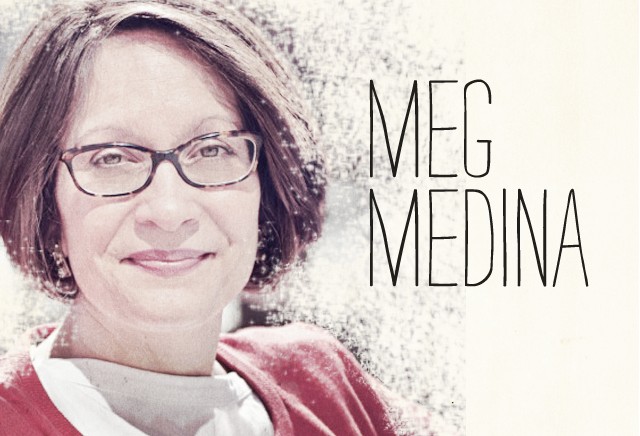
Reading revolutionary
The ever-expanding young-adult literature universe has a gaping void when it comes to multicultural voices, says author Meg Medina, and she’s aiming to fill it.
Growing up, Medina didn’t notice the lack of characters in books that looked and sounded like her Cuban family, because few writers were having that conversation. “I so wish I had some access. It would’ve relieved years of feeling that to succeed, I somehow had to ‘get past’ being Latina,” Medina said.
Medina wants to help bicultural Hispanic teens keep and grow their identity by reflecting their lives in literature. She hopes to expose non-Latinos to her books as well, using universal themes to show that our life experiences aren’t so different, no matter our culture.
In “Yaqui Delgado Wants to Kick Your Ass,” she bluntly tackles the subject of bullying. So much so that it’s been put on banned book lists because of the title, for which Medina makes no excuses.
“If you’re asking young people to trust adults, we owe it to them to talk about difficult problems honestly. If not, we’re going to reinforce how shameful it is to be bullied.” The subject matter hit close to home for Medina. She experienced bullying during her high school years, which led to low-self-esteem, truancy, lying and surrounding herself with dangerous people, hoping their street cred might rub off on her. The good news: She survived. And she wants to help other kids pull through tough times, too.
To that end, she co-founded Girls of Summer, a blog that creates annual summer reading lists that span all ages and speak to the experience of becoming a strong woman.
In January, Medina won the Pura Belpre award, the American Library Association’s top award for Latino children’s and youth authors “whose work best portrays, affirms, and celebrates the Latino cultural experience in an outstanding work of literature for children and youth.”
The honor has raised her profile. She’s been invited to speak about her work at the National Book Festival and the National Latino Children’s Literature Conference in addition to more than 25 talks she has scheduled this year.
“I love visiting with young people. I respect them and their struggles and tell them the unvarnished truth.”
Medina is working with REFORMA, an American Library Association affiliate promoting Spanish-language and Latino oriented materials in libraries, helping to move stories like hers into the mainstream.
“I want multicultural fiction to no longer be considered niche fiction. It’s just fiction about who’s here,” she said.











